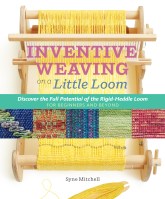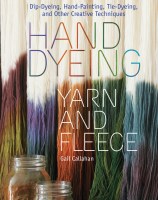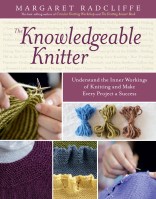On Weaving and Whaling
A Storey book on rigid-heddle weaving demystifies a metaphor from a classic American novel.
I love whales. I was also an English major in college. Yet somehow I never managed to read Moby Dick. This is perhaps an even greater oversight now that I work at Storey, where our offices have a view of Mount Greylock, the highest natural point in Massachusetts and the mountain Melville gazed upon as he penned his novel.
This past January, fed up with my own shortcomings, I joined a group of a dozen or so fellow readers who were also preparing to set sail with Ishmael, Queequeg, Ahab, and the rest. Though I anticipated that reading Moby Dick would satisfy both my inner language-lover and whale geek, I couldn’t have known that I would rely on a Storey book to unlock one of Melville’s recurring metaphors.
“Did you know there’s a whole section in Moby Dick about weaving?” I asked my coworkers one morning. No one I talked to knew (or remembered) the passage in chapter 47, when Ishmael and Queequeg are engaged in the act of weaving a mat. Ishmael acts as the loom’s shuttle, passing the weft through the warp, while Queequeg carelessly uses his oaken sword as a beater. Ishmael feels, while mat-making, as if “this were the Loom of Time, and I myself…were weaving away at the Fates”; to him, the fixed strands of the warp represent necessity, the shuttle stands for free will, and the beater, chance. All come together to shape a fabric unique to the circumstances, materials, and people that played a role in creating it. In the ensuing 300+ pages of the novel, this comparison comes up again and again.
Not being a weaver myself, I consulted a copy of Syne Mitchell’s new book, Inventive Weaving on a Little Loom, for a clearer visual. As I looked up “warp,” “weft” (or “woof,” as it appears in Moby Dick), and “shuttle,” I couldn’t help but notice that, in her introduction, Syne Mitchell swoons over the way “the tiny dots of warp and weft combine to create new, unanticipated colors” in a woven fabric, just as Ishmael marvels at interplay of the three separate Fates. Mitchell also writes of her chance encounter with the craft, her resulting obsession, the toggle between head and heart, and how weaving creates in her “a profound sense of ‘What’ll happen if…?’” — all of which echo the themes of life aboard the Pequod.
As more parallels added up, I wondered: what’s with all the weaving in Moby Dick?
As is true of man’s relationship with whales, weaving’s roots are ancient. Yet Melville published Moby Dick while the U.S. was riding the wave of the Industrial Revolution, when weaving had largely moved to the mills and textile production was poised to overtake whaling as the primary industry in New England. In other words, as Melville looked out at the rolling landscape of the Berkshires and wrote of the rolling sea, life as many Americans had known it was gasping its last breath.
Melville seems to suggest that when we live a life disconnected, we risk coming unraveled. It’s what causes Ahab’s madness, and his crew to fall under their deranged captain’s spell. The more I think about it, the more I think that weaving might just be the perfect metaphor for the human response to such a loss, for the forces that exert themselves on our lives and how much (or how little) control we exert over them.
While nothing in any Storey book is as heavy-handed as metaphor in Melville, we do deal an awful lot with the satisfaction and reprieve that come when we live lives connected to materials and process. When we replace making by hand with machines, we may gain speed or precision but we lose the unpredictability that comes from hand-thrown threads (and a perhaps-careless beater) — the magic and mystery, as Syne Mitchell calls it — woven into the act of creating.




